Ufa operation. How were defeated the best parts of the army of Kolchak
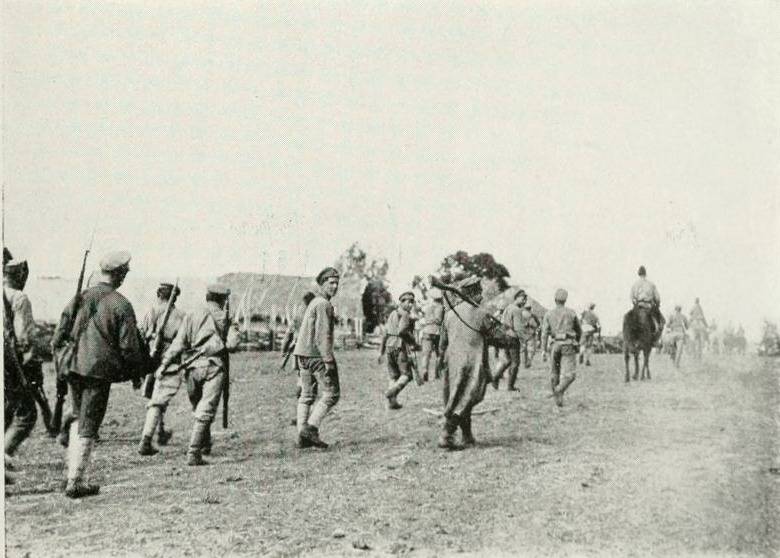
The general situation on the Eastern Front before the start of the battle for Ufa
During the Eastern Front counter-offensive, when the Southern group under the Frunze command struck, the Reds inflicted a heavy defeat on Khanzhin’s Western army, liberated 4 on May Buguruslan, May 13 on Bugulma and May 17 on Belebei. Thus, the red command intercepted a strategic initiative. The defeated Kolchak men hurriedly retreated to the Ufa area.
The morale of Kolchak's army was undermined, the fighting ability dropped. The defeat caused the collapse of the Kolchak army. The Siberian peasants mobilized violently into the army by the masses surrendered and went over to the Reds. The rear of Kolchak's army was undermined by a massive peasant war. In this case, the white command made a number of fatal mistakes. On the southern flank, the Cossack units of the Orenburg and Ural armies concentrated on the siege of their “capitals” - Orenburg and Uralsk. Cossack cavalry was shackled by battles in the area of these cities at the time of the decisive battles in the central direction, instead of going into a deep breakthrough, in raids on the rears of the Reds. Cossacks got bogged down, not wanting to leave their native villages. Also inactive on the southern flank of the Western Army Khanzhin Southern Army Group Belova.
In the north, the white command did not fully exploit the potential of a strong 50-thousand. Siberian Army Guides. The Siberian army fought in the Permian-Vyatka sector, which was actually auxiliary, since it could not have strategic consequences. At the same time, Gaida considered his direction to be the main one and to the last ignored the calls of Kolchak's headquarters to suspend the attack on Vyatka and Kazan, to transfer the main forces to the central direction. On the contrary, he strengthened the attack on Vyatka. As a result, the Western army of Khanzhin was defeated, the Reds began to go to the flank and rear of the Siberian Army and all its previous successes were devalued.
However, while in the center of the Eastern Front there was a radical change in favor of the Red Army, on the flanks, the White Guards still won temporary victories. On the southern flank, in the Orenburg and Ural regions, the Ural Cossacks approached Orenburg, and the Ural White Cossacks imposed Uralsk. Both cities were in dire straits. On the front of the 2 Red Army, the White Guards of 13 in May 1919 broke through the front in the Vyatskiye Polyan area, but with the help of reserves the Reds eliminated this breakthrough.
In the 20-s of May, the pressure of the 5-th Red Army on the flank of the Siberian Army Gaydy was marked. This forced the whites to withdraw some of their forces from the line of the Vyatka River to the east. The 2 Red Army took advantage of this and in May 25 transferred its right flank (28 Rifle Division) to the east bank of the Vyatka River. Then they began an offensive on the other side of Vyatka and the rest of the 2 Army, advancing into the Izhevsk-Votkinsk district. As a result, the advance of the Siberian army was halted. Gaide soon had to abandon the offensive of his right wing on the Vyatka direction in order to fend off the movement of the 2 Army. True, in early June, the White Guards were still able to press the 3 Red Army and temporarily occupy the Eyes.
Meanwhile, the Soviet command, after the fracture in the central sector of the front, set new offensive tasks. The 3 and 2 Red armies were to attack the white group north of r. Kama (army guides). 5-I army had to transfer its two divisions on the right bank of the river. Kama to support this offensive. The rest of the troops of the 5 Army were to support the attack of the Southern group on the Ufa area. In addition, it was necessary to rectify the situation on the southern flank, where the White Cossacks attacked Uralsk and Orenburg.
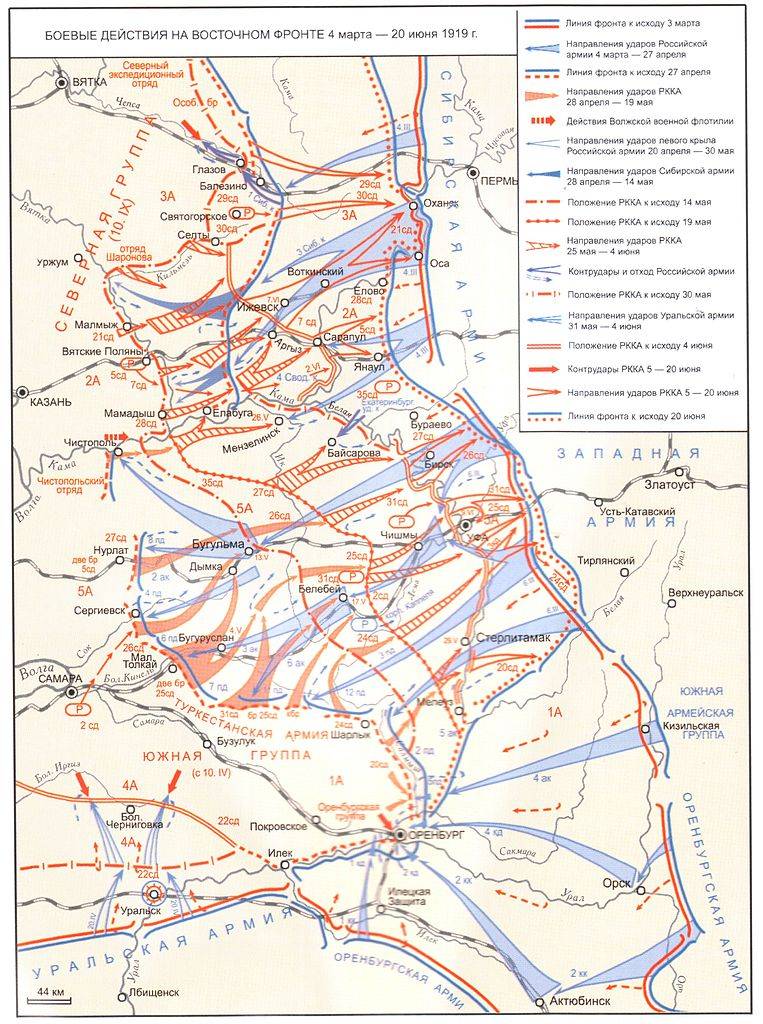
Party plans
The command of the Eastern Front, having decided on the continuation of the offensive operation, continued to place the main tasks on the Southern Group of Frunze. After the end of the Bugulma and Belebey operations, the Southern group was to continue the offensive and free the Ufimsko-Sterlitamak region from the enemy (Sterlitamak himself had 1's cavalry in May 28). Also, the troops of the Southern Group were to smash the enemy on the southern flank, firmly occupy the Orenburg and Ural regions. The 5 Army should have provided support to the South Group in the central direction.
The command of the Southern Group entrusted the task of defeating the enemy in the Ufa region to the Turkestan Army, reinforced by one division of the 1 Army (24-Infantry Division). The troops of the right flank of the 1 Army were to cover the Ufa group of whites from the southeast. At the same time, the red cavalry was to go to the enemy’s rear communications. The troops of the left flank of the 1 Army planned to activate in the Sterlitamak direction. The command of the 5 Army allocated 1,5 divisions to cross the Belaya River in the area with. Akhlystino. Thus, the red command outlined wide ticks to reach the enemy from the north and south (forces 5 and 1, right wing of the Turkestan army) and offensive from the front (Turkestan army).
In the meantime, the white command was still vested with taking the initiative back into its own hands. The defeated troops of the Western Army were divided into three groups: Volga under the command of Kappel, Ufa - Voitsekhovsky and Ural - Golitsyn. Chief of Staff of the Western Army became General Sakharov, from June 22 he will become commander, Khanzhin for the inability to “stop the retreat and disintegration of the troops”, will be sent to the Reserve Stakes. This was not the best decision, Sakharov did not have the talents of a commander, he was distinguished only by his iron determination and readiness to carry out any order.
At the same time, the White High Command finally managed to convince the Siberian Army commander, Haida, to send reinforcements to the south. Gaida deployed the Ekaterinburg shock corps to the south, which was intended to promote success in the Vyatka sector. This corps forced the Kama and was aimed at hitting the rear of the Southern Frunze group. These troops were to provide the right flank of the Western Army. Thus, Kolchakians relied on the natural boundary of the river. White and concentrated shock group at the mouth of the river. White north of Ufa. One more strike group was planned to be assembled for the river. White and south of Ufa. Two strike groups of whites had to take the Red Turkestan army into ticks.
The forces of the parties during the Ufa operation were approximately equal. 5-I and the Turkestan army - about 49 thousand bayonets and sabers, about 100 guns. The Western White Army numbered about 40 thousand fighters with 119 guns. However, in the Ufa direction, the Reds had an advantage - about 30 thousand fighters of the Turkestan army (inspired by recent successes) against about 19 thousand Volga and Ufa groups of whites (broken morally).
The defeat of Kolchak in Ufa
28 May 1919 began the oncoming battle of the troops of the 5 Army with the right-flank Kolchak strike group, which managed to regroup and cross the Belaya. Before the advancing White Guards were not the rear of the Frunze troops, but the deployed and ready for battle front of the 5 Army. Moreover, the self-assured Gaida did not even organize intelligence. The whites themselves entered the ticks between the two red divisions, were attacked from both sides and defeated. This battle began on May 28 in the area with. Baysarovo and already 29 May ended in victory for the Reds. The remains of a white hull pressed to the river and finished off. In addition, 28 - 29 May white attacked the front of the Turkestan army, but did not succeed. The defeat of the White Guards was associated not only with material problems, but also with the moral breakdown of Kolchak men. This success created favorable conditions for the offensive of the Turkestan army. The defeated troops of the white army of Khanzhin began to roll back under the onslaught of the Reds to crossings on the r. White in the area of Ufa.
5-I red army, which as a result of this battle was on the ledge ahead of the Turkestan army, could capture the retreating enemy group or part of it, continuing to advance to the south-east. However, following the instructions of the command, the troops of the 5 Army 30 of May forced White and began to turn sharply north to Birsk, which they occupied on June 7. As a result, at the second stage of the operation, the Turkestan army had to act independently, without contact with the 5 army. On the other hand, the rapid advance of the 5 Army to Birsku improved its position on the front of the 2 Army Red. The White Guards began to quickly give up their positions to it, and the Reds launched an offensive against Sarapul and Izhevsk.
On June 4, 1919, the Turkestan army again attacked the enemy. This time, the troops of the Western Army rolled back over the river. White and prepared for a stubborn defense, destroying all the crossings. Two divisions of the 6th corps were located on both sides of the Samara-Zlatoust railway for the immediate defense of Ufa; two weak divisions were stretched out on a wide front north of Ufa - from the city to the mouth of the river. Karmasana. The most combat-ready units, the Kappel corps, were located in the south of the city. Further, against the front of the Red 1st Army, there was only a curtain of the remnants of the brigade of the 6th Infantry Division and several cavalry detachments.
The Red command continued to strike the main blow with the right wing of the Turkestan army in covering the White left flank - at the Arkhangelsk plant. Thus, the Reds wanted to reach the enemy’s rear iron communication and cause the collapse of its front. The composition of the shock group should have been 4 rifle troops and 3 cavalry brigades. However, the crossing of the shock group on the night from 7 to 8 June through r. White in the area of art. Tyukunyevo failed, as the floating bridge was broken by a fast current. In addition, here Kolchak created a dense defense.
But this failure was rewarded on the same night with the successful ferry of the 25 Infantry Division of Chapaev on the left flank of the army, in the Belaya area, below Ufa, at st. Krasny Yar. Chapaev managed to seize two steamboats, and the found boats were driven here and formed a crossing. At first, the white command decided that Krasny Yar had only an auxiliary attack, so the main forces of the army were left south of Ufa. Only the 4 Mountain Division with the support of the squadron (16 machines) was sent to Red Yar. But Frunze concentrated artillery here (48 guns) and sent his reserve to this area - the 31-th Infantry Division, which forced the river in the area of Dmitrievka. Under the cover of powerful artillery fire, the Reds captured a large bridgehead. White tried to rectify the situation with counterattacks, but did not succeed. Ural arrows desperately attacked, went to bayonet, but lost the battle. The rage of the battle is evidenced by the fact that during the raids of the aircraft Chapaev was wounded and wounded by Frunze.
Only after that, the command of the Western Army threw into battle its elite units — Kappelevts and Izhevsk. It was here that the famous "psychic attack" took place. Only the Kappelevs had no officers' regiments, like the whites in the South of Russia and their distinctive marks. And people from Izhevsk and under Kolchak fought with red flags and went to the attacks with Varshavyanka. However, the reds here were quite motivated and efficient, they met the enemy with machine-gun artillery fire. Kappel's divisions suffered huge losses, and yet converged with the Reds in hand-to-hand combat, but they could not dump them into the river. Thousands of bodies remained on the battlefield, the core of the Western Army was drained of blood. The Red Army soldiers repelled all the counterattacks of the enemy, and then went on the offensive themselves.
Thus, the red troops broke through to the right bank of the White. Building on their success, the Chapaevites occupied Ufa on the evening of June 9, 1919. On June 10, units of the 31st division in the region 18 km east of Ufa intercepted the Ufa-Chelyabinsk railway. June 14th strike group supported by Volzhskaya flotilla forced White and began to develop an offensive to the Arkhangelsk and Urmani, trying to surround the Volga and Ufa groups of whites. Above Ufa, Kolchakites still continued to fight until June 16, but even there they began a general retreat to the east. By June 19 - 20, Kolchakites with heavy losses, but avoiding encirclement, retreated east to the Urals.
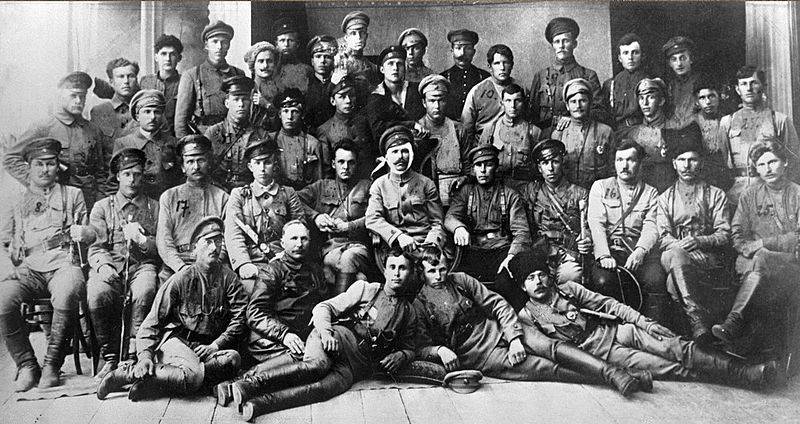
Sarapulo-Votkinsk operation
The success of the Southern Group in the Ufa area created favorable conditions for the onset of the 2 and 3 armies - more than 46 thousand bayonets and sabers with 189 guns. The Siberian White Army numbered 58 thousand bayonets and sabers with 11 guns.
According to the plans of the red command, the 2-I army was to attack Votkinsk; the troops of the right flank of the 3 th army to Izhevsk, the left flank - to Karagay; 5-I army received the task to force the river. White, take Birsk and attack Krasnoufimsk, to the rear of the Siberian army.
24 -25 May 1919, the troops of the 2 Army with the support of the Volga Flotilla forced the river. Vyatka. The Azn 28 Rifle Division, together with the landing party of the Volga Flotilla 26, took Elabuga in May. The Reds began to develop an offensive in the Izhevsk-Votkinsk district. At the same time, the troops of the 5 Army reached the Kama River and the mouth of the Belaya River. The offensive of the 3 Army did not succeed, white troops under the command of General Pepeliaev launched strong counter blows and advanced south and north of Glazov by 40 — 60 km, creating the threat of capture of the city.
Meanwhile, the troops of the 2 Army developed a breakthrough. Parts of the 28 division of 1 June were occupied by Agryz, and 2 of June Sarapul. The 7 Division also came to Agryz. 3 June, Kolchak's men beat off Agryz, but 4 June Reds brought him back. The 28 division, with the support of the Volga Flotilla, repulsed enemy counterattacks in the Sarapul area. 7 June red beat off Izhevsk.
On the Vyatka direction, Kolchak's 2 of June captured Glazov, but the successful offensive of the 3 and 5 Red army threatened the flank and rear of the white attack force, soon forcing the Siberian army to begin withdrawing forces to the east. 6 June 3-I Red Army again launched an offensive in the Perm direction. On June 11, the troops of the 2 Army captured Votkinsk, and by the end of 12, they occupied the entire Votkinsk region.
Thus, the advance of the Siberian army in the Vyatka direction failed. White began a retreat to the east and on the northern flank of the front. The Red Army liberated an important Izhevsk-Votkinsk industrial region.
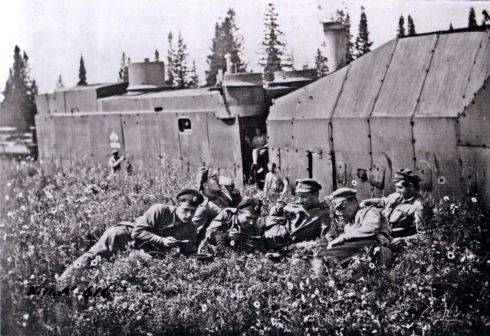
Remains of Kolchak retreat to the Urals
In the central direction, the Red Army defeated the Kolchak troops in the Ufa operation, liberated the city of Ufa and the Ufa region. An attempt by the Western Army to consolidate at the turn of the r. White, to regroup and recuperate with the aim of a new offensive to the Volga. The White Command, trying to regain the initiative, lost the last combat-ready reserves in the battles near Ufa. Kolchak had three divisions in reserve, which had just begun to form in Tomsk and Omsk. Whites have lost food reserves of the Ufa region. The Reds created the conditions for overcoming the Urals.
On the northern flank of the Eastern Front, the Reds liberated an important industrial Izhevsk-Votkinsky district. Hyde's Siberian army retreated. On the southern wing, the situation remained tense. 4-I red army was strengthened to 13 thousand fighters, but the advantage remained for the enemy - 21 thousand bayonets and sabers. The Red Command had to dispatch Chapayev's 25 Division to the south. After that, the Turkestan army was disbanded, and the remaining troops were distributed between the 1 and 5 armies.
After these severe defeats between the Volga and the Urals, Kolchak's army began to unswervingly go towards its destruction. It is possible that they would have finished Kolchak in the summer of 1919 of the year. But the whites in the east of the country were saved by the attack of Yudenich's troops on Petrograd and Denikin’s army on Moscow. The southern front of the Reds collapsed. Frunze had nothing to develop the offensive and finish off the Kolchak men. His best shock divisions were redeployed to other areas: Chapaev’s 25 division was moved to Uralsk to cut off the White Cossacks from Denikin; The 31-th division was sent to Voronezh, the 2-th division - partly to Tsaritsyn, partly to Petrograd.
- Alexander Samsonov
- Smoot. 1919 year
How the British created the Armed Forces of the South of Russia
How to restore Soviet power in Ukraine
How Petliurists led Little Russia to a complete catastrophe
How defeated Petliurism
Give the boundaries of 1772 of the year!
Battle for the North Caucasus. How to suppress the Terek Uprising
Battle for the North Caucasus. CH 2. December battle
Battle for the North Caucasus. CH 3. The January accident of the 11 Army
Battle for the North Caucasus. CH 4. How the 11 army died
Battle for the North Caucasus. CH 5. Capture of Kizlyar and the Terrible
Battle for the North Caucasus. CH 6. Furious assault of Vladikavkaz
How Georgia tried to seize Sochi
How the Whites crushed the Georgian invaders
The war of February and October as a confrontation between two civilization projects
How did the "Flight to the Volga"
How Kolchak's army broke through to the Volga
Catastrophe of the Don Cossacks
Verkhniyon uprising
How "Great Finland" planned to seize Petrograd
"All to fight with Kolchak!"
Frunze. Red Napoleon
The missed opportunities of the army of Kolchak
May offensive of the Northern Corps
How white broke through to Petrograd
Battle for the South of Russia
Strategic change on the southern front. Manych operation
Crimea on fire Russian distemper
Crimea in 1918-1919. Intervents, local authorities and whites
How did the uprising of ataman Grigoriev
Nikifor Grigoriev, "ataman of the rebel forces of Kherson region, Zaporizhia and Tavria"
Odessa operation ataman Grigoriev
Uprising in the Ukraine. How failed the “Blitzkrieg” of Grigorievka
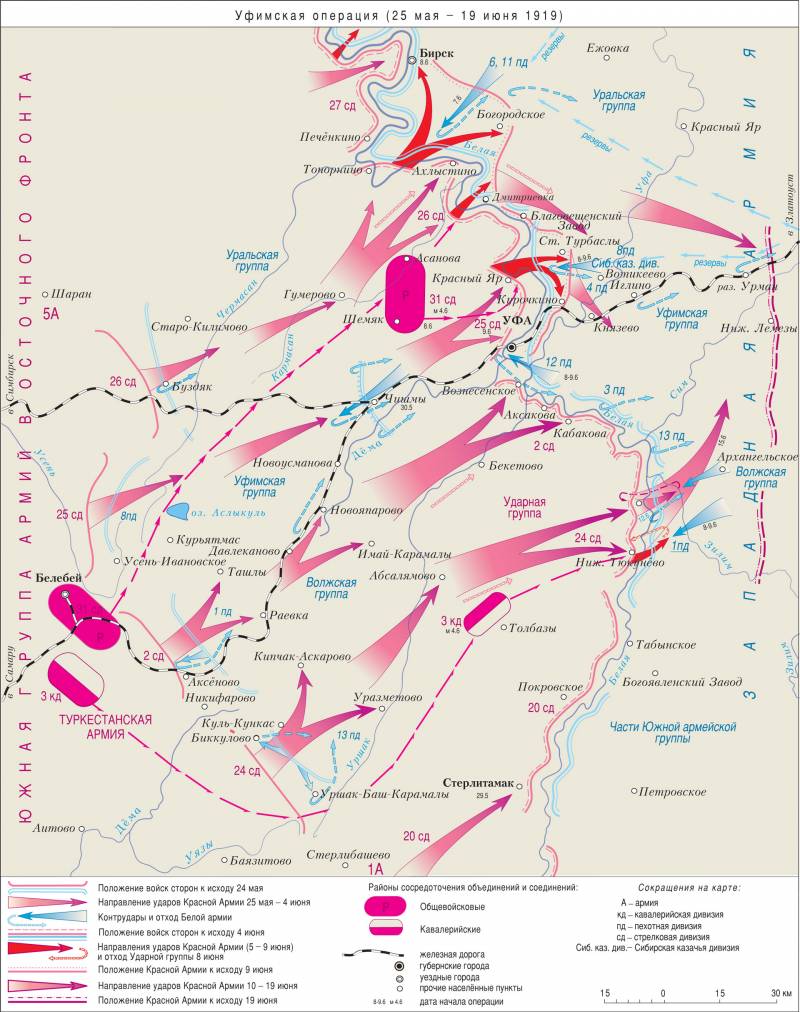
Information